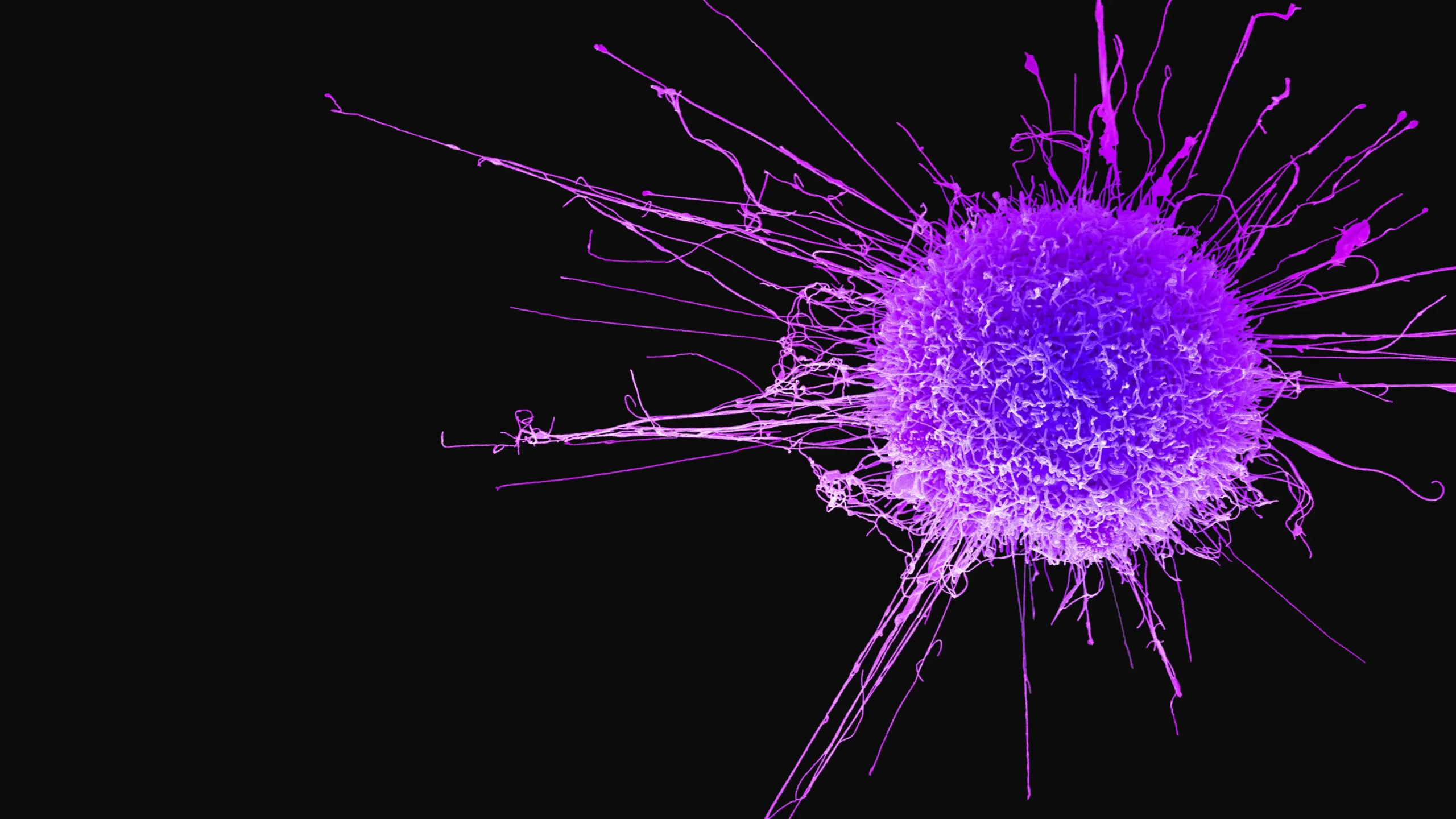The pursuit of a cancer vaccine with minimal side effects is progressing toward Phase 3 clinical trials, led by Dr. Thomas Wagner, the founder of Orbis Health Solutions and a dedicated cancer researcher. Wagner aims to revolutionize cancer treatment by mitigating the severe side effects often associated with traditional therapies like chemotherapy, which inadvertently harm healthy cells, leading to debilitating consequences for patients.
1.Types of Cancer Vaccines
2.Mechanisms of Action
3.Personalized Cancer Vaccines
4.Clinical Development and Trials
5.Combination Therapies with Cancer Vaccines
Wagner’s motivation stems from witnessing patients suffer not only from the impact of cancer but also the distressing side effects of treatment. In response, he has dedicated his efforts to developing a personalized cancer treatment that harnesses the body’s immune system rather than compromising it. The vaccine, known as a tumor lysate particle only (TLPO) vaccine, employs a patient’s own tumor cells to identify specific components. These components are then reintroduced into the body through the vaccine, prompting the immune system to recognize and combat cancer cells as if they were an infection.

Traditionally, cancer cells evade the immune system as they are recognized as the body’s own cells. Wagner’s innovative approach seeks to overcome this challenge, potentially providing a groundbreaking cure for various cancers, particularly when combined with early detection methods.
1.Types of Cancer Vaccines
Explore the various categories of cancer vaccines, including preventive (prophylactic) vaccines designed to ward off specific types of cancer and therapeutic (treatment) vaccines aimed at treating existing cancer or preventing its recurrence.
2.Mechanisms of Action
Delve into the immunological processes and mechanisms by which cancer vaccines stimulate the body’s immune system. Understand how these vaccines enhance the recognition and targeting of cancer cells by the immune system.
3.Personalized Cancer Vaccines
Delve into the immunological processes and mechanisms by which cancer vaccines stimulate the body’s immune system. Understand how these vaccines enhance the recognition and targeting of cancer cells by the immune system.
4.Clinical Development and Trials
Examine the current status of cancer vaccine research, including ongoing clinical trials and developments. Gain insights into the challenges and successes faced by researchers in bringing cancer vaccines from the laboratory to clinical applications.
5.Combination Therapies with Cancer Vaccines
Explore how cancer vaccines are often integrated into comprehensive cancer treatment plans. Understand their role in combination with other modalities such as surgery, chemotherapy, and radiation therapy for a more effective and holistic approach.
The TLPO cancer vaccine has undergone Phase 2 clinical trials, primarily focusing on advanced melanoma cases. The latest data, presented at an academic conference, revealed promising outcomes, with nearly 95% of individuals receiving only the vaccine still alive three years into treatment, and 64% remaining disease-free. Notably, the vaccine demonstrated efficacy in advanced melanoma stages, showcasing a significant improvement in disease-free survival compared to a placebo group.
Common side effects observed were mild, such as redness or pain at the injection site, fever, and fatigue – akin to reactions seen with other vaccines stimulating an immune response. Despite these positive results, caution is advised, as Phase 2 trials do not provide conclusive evidence. A Phase 3 clinical trial, approved by the Food and Drug Administration (FDA), is planned to enroll 500 participants over three years, with the aim of validating the vaccine’s potential as a transformative cancer treatment.
Riley Polk, president of Orbis Health Solutions, emphasized the personal impact of the vaccine, citing a $100 million budget for the Phase 3 trial. For smaller companies like Orbis, securing such funds poses a significant challenge, hindering the ability to conduct additional trials that could expand the vaccine’s applications.
To overcome financial constraints, Wagner’s team initiated a basket trial, approved by the FDA, allowing the TLPO vaccine to be tested in individuals with various solid tumors meeting specific criteria. Initial reports from the basket trial are encouraging, with participants experiencing minimal side effects and even reporting improved well-being.
The success of the basket trial, along with ongoing Phase 3 trials, will determine the future availability and broader applications of the TLPO cancer vaccine. Positive outcomes may attract partnerships with larger pharmaceutical companies, potentially facilitating more extensive trials and FDA approvals.
As this groundbreaking research progresses, the hope is that Wagner’s innovative approach will usher in a new era of cancer treatment, offering improved efficacy with minimal side effects for patients facing various forms of this devastating disease.

Cancer is a complex and often devastating disease that impacts millions of lives worldwide. In this article, we will delve into the fundamentals of what cancer is, exploring its causes, types, and current treatment approaches.
Defining Cancer:
Cancer is a group of diseases characterized by the uncontrolled growth and spread of abnormal cells in the body. These cells can form a mass, known as a tumor, which can interfere with the normal functioning of organs and tissues. Not all tumors are cancerous; benign tumors do not invade nearby tissues or spread to other parts of the body, while malignant tumors are cancerous and can metastasize.
Causes of Cancer:
Several factors contribute to the development of cancer, and it is often a result of a combination of genetic and environmental influences. Key factors include:
- Genetic Mutations: Changes in the DNA of cells can lead to uncontrolled cell growth. These mutations can be inherited or occur during a person’s lifetime due to exposure to certain substances or environmental factors.
- Environmental Factors: Exposure to carcinogens, such as tobacco smoke, ultraviolet (UV) radiation, certain chemicals, and pollutants, increases the risk of developing cancer.
- Lifestyle Choices: Unhealthy habits like smoking, poor diet, lack of physical activity, and excessive alcohol consumption contribute to the risk of cancer.
Types of Cancer:
Cancer can affect virtually any part of the body, leading to a wide variety of cancer types. Common types include:
- Breast Cancer: Affecting the breast tissue, this is one of the most prevalent forms of cancer in women and men.
- Lung Cancer: Often linked to tobacco smoking, lung cancer is a major cause of cancer-related deaths globally.
- Colorectal Cancer: Developing in the colon or rectum, this cancer is associated with factors such as age and family history.
- Prostate Cancer: Common in men, prostate cancer occurs in the prostate gland.
- Leukemia: A cancer of the blood and bone marrow, characterized by the rapid production of abnormal white blood cells.
Treatment Approaches:
Advances in medical research have led to various cancer treatment options, which may be used alone or in combination. Common treatment modalities include:
- Surgery: Removing the tumor or affected tissue through surgery is a primary treatment for many cancers.
- Chemotherapy: Using drugs to kill or control cancer cells, chemotherapy may be administered orally or intravenously.
- Radiation Therapy: Employing high doses of radiation to target and destroy cancer cells, often used in conjunction with surgery or chemotherapy.
- Immunotherapy: Enhancing the body’s immune system to recognize and attack cancer cells.
- Targeted Therapy: Utilizing drugs that specifically target cancer cells while minimizing damage to normal cells.
Conclusion:
Understanding cancer involves recognizing its diverse forms, causes, and available treatments. Ongoing research and advancements in medical science offer hope for improved outcomes and innovative approaches in the ongoing fight against cancer. Regular screenings, healthy lifestyle choices, and early detection play crucial roles in cancer prevention and early intervention.
Vaccines
A cancer vaccine is a type of immunotherapy designed to stimulate the body’s immune system to recognize and attack cancer cells. Unlike traditional vaccines that prevent infectious diseases, cancer vaccines aim to treat existing cancer or prevent its recurrence. The concept behind cancer vaccines is to leverage the body’s natural defense mechanisms to target and eliminate cancer cells.
There are different types of cancer vaccines, and they can be broadly categorized into two main groups:
- Preventive (Prophylactic) Vaccines:
- These vaccines are intended to prevent cancer from developing in the first place.
- Human papillomavirus (HPV) vaccines are an example of preventive vaccines. HPV infections are a major risk factor for cervical cancer, and vaccination aims to reduce the incidence of HPV-related cancers.
- Therapeutic (Treatment) Vaccines:
- These vaccines are designed to treat existing cancer or prevent its recurrence by stimulating the immune system to target cancer cells.
- Therapeutic cancer vaccines often use specific antigens derived from cancer cells to train the immune system to recognize and attack those cells.
A notable approach in therapeutic cancer vaccines is personalized vaccines, where the treatment is tailored to an individual patient’s specific cancer profile. One such example is tumor lysate vaccines, like the tumor lysate particle only (TLPO) vaccine mentioned in a previous conversation. These vaccines use a person’s own tumor cells to create a personalized vaccine, prompting the immune system to recognize and attack cancer cells as foreign invaders.
The process typically involves the following steps:
- Tumor Sampling: A small sample of the patient’s tumor is collected.
- Identification of Antigens: Specific antigens (proteins) unique to the patient’s cancer cells are identified.
- Vaccine Production: The personalized vaccine is created, often by combining the identified antigens with other immune-stimulating substances.
- Administration: The vaccine is administered to the patient to activate their immune system against the cancer cells.
It’s important to note that while cancer vaccines show promise, they are still an area of active research and development. Clinical trials are ongoing to assess their safety, efficacy, and potential as part of comprehensive cancer treatment strategies. Additionally, cancer vaccines are often used in combination with other treatment modalities, such as surgery, chemotherapy, and radiation therapy, to provide a more comprehensive approach to cancer care.
To Know More About Cancer Please click Here
You May like :


